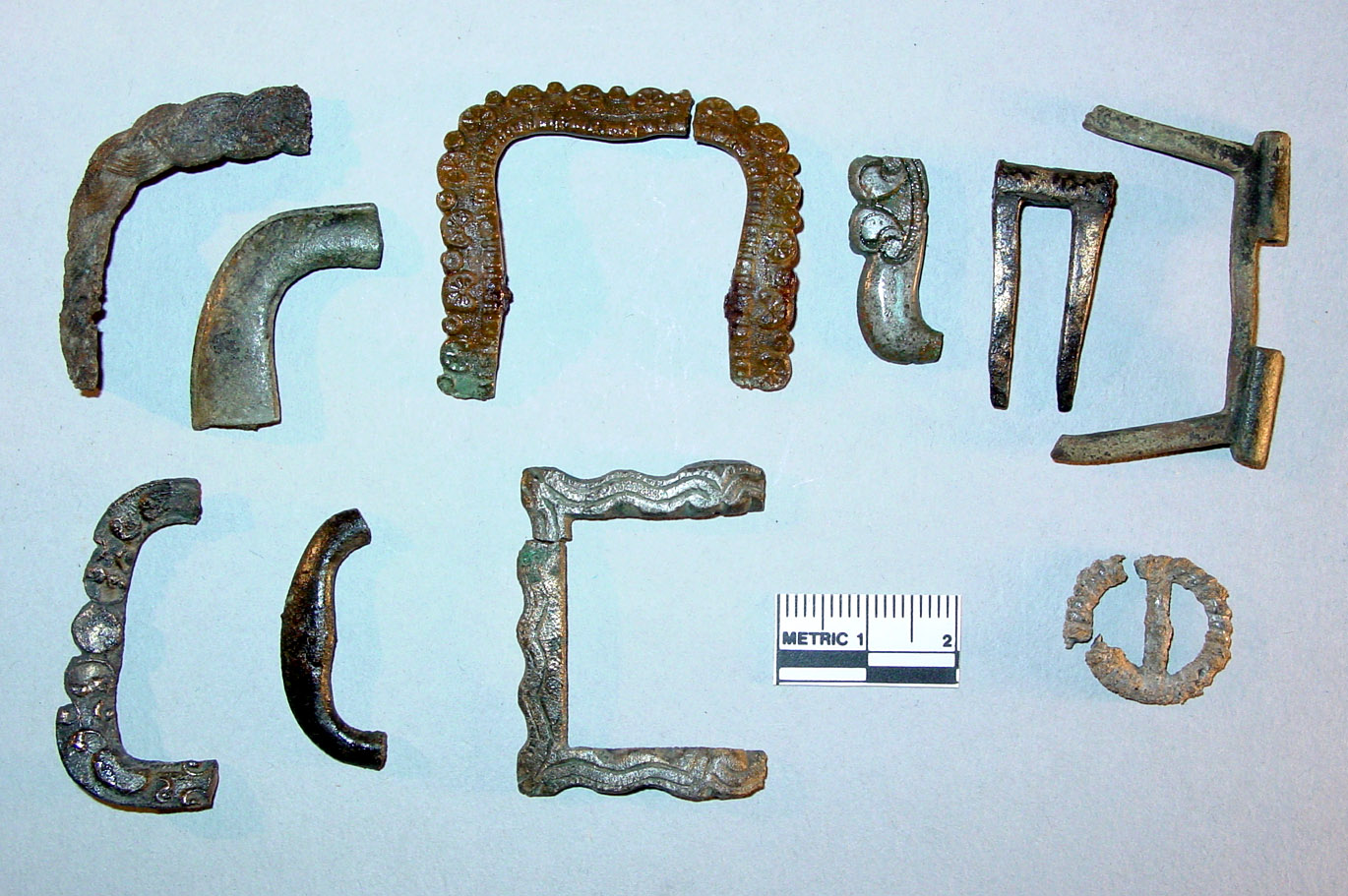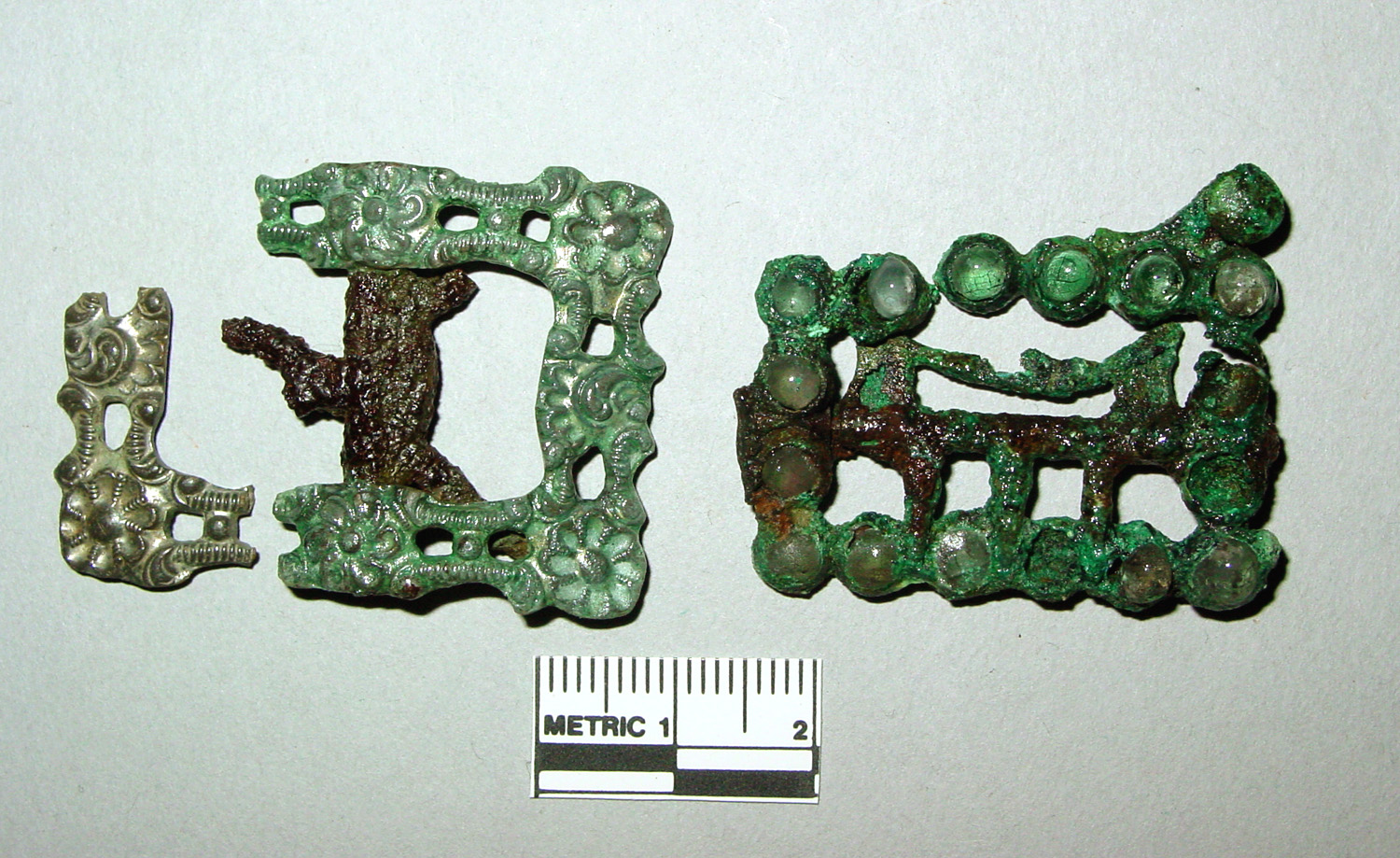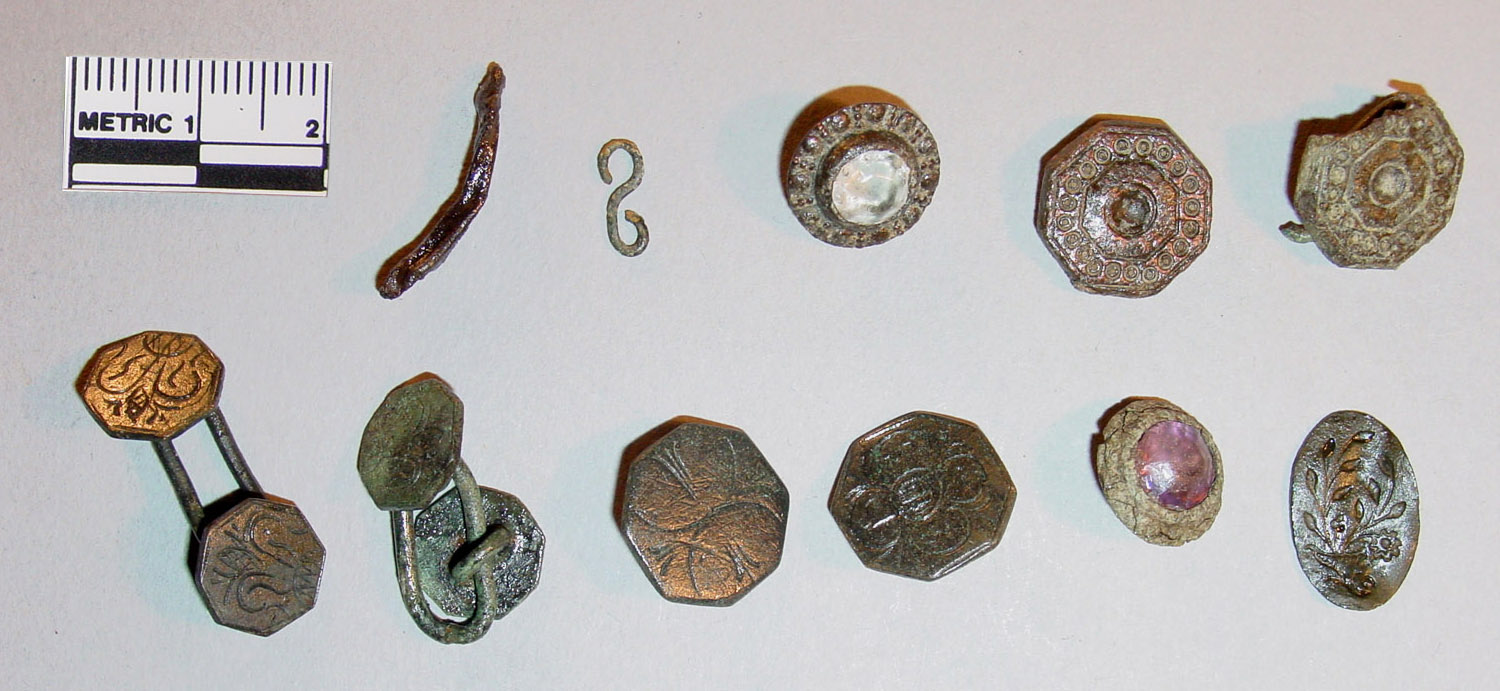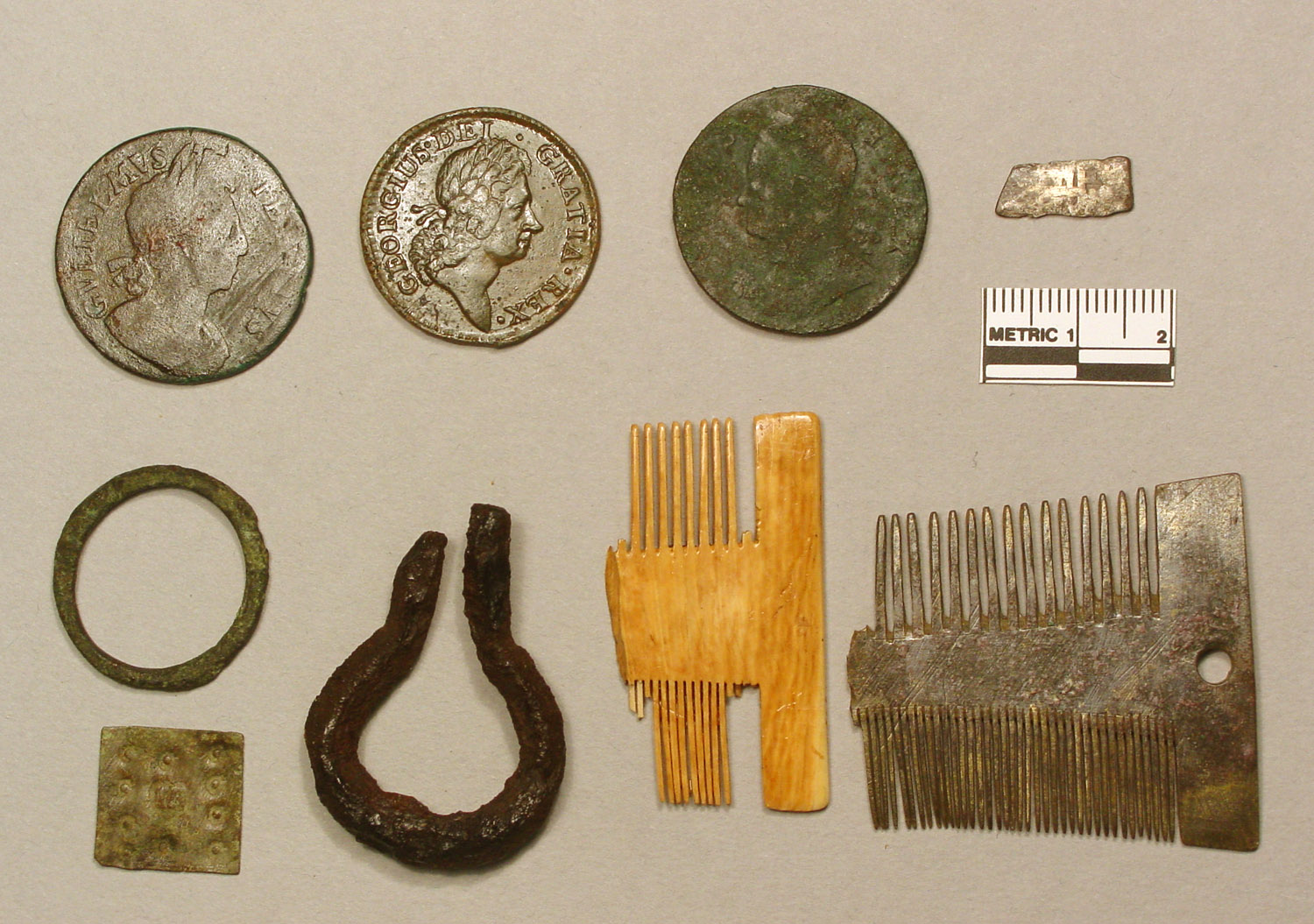Ephraim Sprague House Archaeological Site
A Time Capsule from the 18th Century
Personal Items

|
|
Various copper alloy shoe-buckle frame fragments and a small pewter clothing buckle. The two fragments on the top right are a tine and chape from shoe-buckle backpieces, the moveable parts that fastened the buckle frame to the shoe latchet. Click image to enlarge.
|
Many personal items were recovered during the excavations because they were too damaged to be salvaged after the
fire. Although everyday clothing in 18th-century Connecticut was typically made of white or dark-colored cloth,
clothing accessories like shoe buckles, knee buckles, buttons and cufflinks often had decorations cast or engraved into them. Sometimes they were inlaid with glass “gems” of various colors. Women also wore glass-bead jewelry in the form of necklaces and bracelets. There are 122 buttons and button fragments from the site made from various metals such as brass, brass covered with a thin coating of tin, pewter, and a lead and tin alloy called white metal. The simplest buttons were cast in molds; others were made of several pieces brazed or soldered together. Buttons can also be dated by the way they were manufactured. Small thin points of sheet brass called aglets were attached to cloth ties which made lacing up clothing easier, much like the plastic tips on shoe laces do today.
Simple hooks and eyes made from brass wire were also used as clothing fasteners.

|

|

|

|
|
Two knee buckles. One is made from white metal and the other is brass with small white glass gems inlaid into it.
The brown metal parts are the backpieces. Click image to enlarge.
|
Cufflinks were often decorated. Most have geometric designs or floral themes. The cufflink on the bottom right has a cornucopia engraved on it, likely symbolic of men’s roles as growers of food. On the top left is a brass aglet for lacing clothing and a possible “hook” part to a “hook-and-eye” fastener.
Click image to enlarge.
|
Some of the 159 glass beads recovered from the site. The bead colors are diverse and include clear, red, blues, white, greens, and black. Most were round and many of the larger beads were facetted. The smaller beads were used for beadwork crafts.
Click image to enlarge.
|
Various buttons from the site. The simple cone-shaped pewter button in the top left is the oldest. One-piece buttons cast from pewter, a lead alloy, were the easiest and cheapest to make. The buttons on the bottom row are made with glass.
Click image to enlarge.
|
Literacy was highly valued in New England society and was essential for reading the Bible, corresponding, and
participating in town affairs. Purchases, loans, and trades were meticulously recorded by everyone from farmers
to merchants, which was particularly important when hard currency was in short supply, as during the colonial
period. Both boys and girls went to school, which was paid for with taxes. From the site are two brass book
clasps, which were used to keep books, which were valuable, closed and secure, a lead pencil, a small pewter inkwell,
and a corner fragment from an eyeglass lens.

|
|
Personal items including a George II Oldhead halfpenny (1740-1754), George I “Irish Wood” halfpenny
dated 1723, a William III halfpenny dated 1699, and a small piece of a silver coin. There are a plain brass
ring, iron mouth harp, and pieces of a bone comb and a copper-alloy comb. These combs have two sizes of teeth: the larger for grooming, the smaller to remove nits and lice from the hair. In the bottom left is a small brass plate with the letters “IB” stamped into it. Click image to enlarge.
|
Other personal items include a few halfpenny coins and a small fragment of a worn silver coin; the fragment was probably cut, as coins were valued by weight. Two combs were found: one is made of a high-quality copper alloy and the other is bone. There is a brass ring, part of an iron mouth harp (the center vibrating element is missing), and a small sheet-brass plate with the letters “IB” stamped into it. This is possibly a “mourning token,” which were handed out at funerals, much like mourning rings of that time. Perhaps the IB stands for the Latin In Brevis, which refers to life being brief. Memento mori (remember death) was a common theme in Puritan culture.

|
|
Various fragments of kaolin tobacco pipes. The black one on the left burned in the fire and was found on the floor of the south cellar. On the bottom is a “smoker’s companion” or iron ember tongs, a hand-held device used to pick embers out of the hearth to light pipes.
Click image to enlarge.
|
Smoking tobacco was common in colonial New England and over 3,000 kaolin tobacco pipe fragments were found at the site. Tobacco pipes can be dated in three basic ways: by measuring changes in the size of the bore-stem diameters through time (they steadily got smaller), by changes in the shape of the bowls through time, and by the occasional maker’s mark stamped onto them. In the mid-18th century Connecticut newspapers typically advertised tobacco pipes in “long and short” varieties, likely relating to the length of the stem, with longer stems more valuable. Augustus Deley, a “tobaccoist” from New York, sold “all sorts of Tobacco” in Hartford in 1766, including that “fit for chewing, or smoaking; such as Hog-Tail, Pig-Tail, and Shagg in papers, or by the Pound.”

|
|
White clay marble found in the south cellar.
|
Children’s toys are not commonly found at 18th-century house sites, but a single white clay marble was discovered in the south cellar.
Return to Main Page







